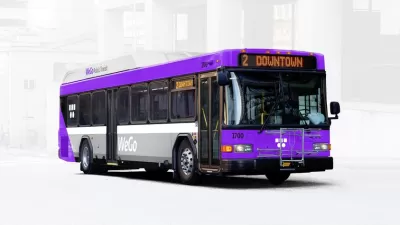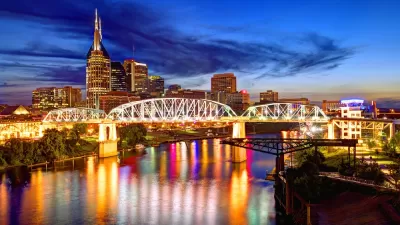The Nashville Metropolitan Transit Authority and the Regional Transportation Authority of Middle Tennessee adopted the most comprehensive and expansive version of the nMotion plan. Now they have to fund all those big ideas.

Joey Garrison digs into "the most crucial, yet elusive, question that could determine whether Middle Tennessee will build a new regional transit system any time soon."
The Nashville Metropolitan Transit Authority and the Regional Transportation Authority of Middle Tennessee announced the 25-year nMotion regional transit plan in August, and now the Nashville Area Chamber of Commerce is leading the effort to figure out how to pay for the $5.97 billion price tag to build out the plan's ambitions.
So far, the chamber's Moving Forward initiative as identified seven funding possibilities, and called for further study of each of them. "Ideas for transit funding are from sales taxes, property taxes, wheel taxes, tourist services taxes, parking taxes, local gasoline taxes and land value capture taxes," according to Garrison.
The chamber is aware, however, that many of those ideas would face stiff political resistance. "In fact, five of the seven ideas — including a local sales tax dedicated solely for transit, a local gas tax and a land value capture tax — would hinge on enabling legislation from the Republican-controlled Tennessee General Assembly, which has shown strong resistance to tax increases of any kind in recent years."
The article, however, begins the work of examining each of the proposed ideas, which are all very speculative at this point, but at least they are already available for the public to consider.
FULL STORY: How to pay for a $6B transit plan? Nashville chamber floats 7 ideas

Study: Maui’s Plan to Convert Vacation Rentals to Long-Term Housing Could Cause Nearly $1 Billion Economic Loss
The plan would reduce visitor accommodation by 25,% resulting in 1,900 jobs lost.

North Texas Transit Leaders Tout Benefits of TOD for Growing Region
At a summit focused on transit-oriented development, policymakers discussed how North Texas’ expanded light rail system can serve as a tool for economic growth.

Why Should We Subsidize Public Transportation?
Many public transit agencies face financial stress due to rising costs, declining fare revenue, and declining subsidies. Transit advocates must provide a strong business case for increasing public transit funding.

How to Make US Trains Faster
Changes to boarding platforms and a switch to electric trains could improve U.S. passenger rail service without the added cost of high-speed rail.

Columbia’s Revitalized ‘Loop’ Is a Hub for Local Entrepreneurs
A focus on small businesses is helping a commercial corridor in Columbia, Missouri thrive.

Invasive Insect Threatens Minnesota’s Ash Forests
The Emerald Ash Borer is a rapidly spreading invasive pest threatening Minnesota’s ash trees, and homeowners are encouraged to plant diverse replacement species, avoid moving ash firewood, and monitor for signs of infestation.
Urban Design for Planners 1: Software Tools
This six-course series explores essential urban design concepts using open source software and equips planners with the tools they need to participate fully in the urban design process.
Planning for Universal Design
Learn the tools for implementing Universal Design in planning regulations.
City of Santa Clarita
Ascent Environmental
Institute for Housing and Urban Development Studies (IHS)
City of Grandview
Harvard GSD Executive Education
Toledo-Lucas County Plan Commissions
Salt Lake City
NYU Wagner Graduate School of Public Service





























